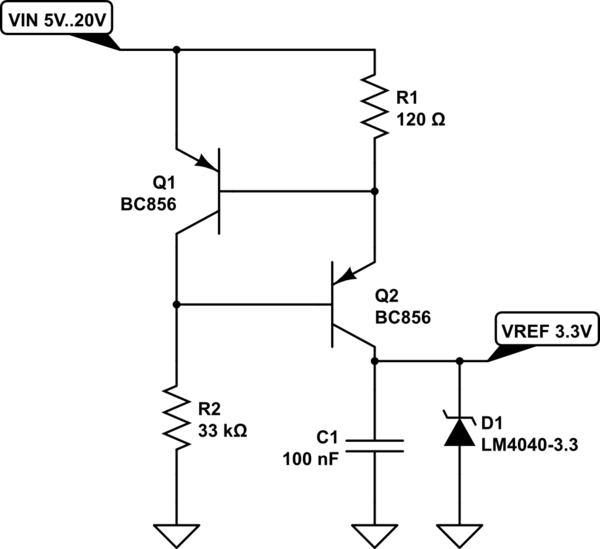I've got an unregulated input voltage of 5V..20V from which I need to drive a shunt reference LM4040 at 3.3V. According to my calculations a shunt resistor of 1.5kOhm would result in a peak current of (20V-3.3V)/1.5kOhm = 11mA and dissipated power of 3.3*11mA=36mW. The current is alsready close to the rated maximum of 15mA. At 5V the a 1.5kOhm shunt will only give around 1.1mA of output current which seems low since the STM32 datasheets states VREF+ current consumption of 500µA but does not state wheter this is for one ADC or all three sampling.
Given these constraints I'm thinking about placing a simple PNP current source in front of the shunt reference to supply a constant 5mA independent of the supply voltage. I also hope to reduce self heating the reference and therefore improve stability.

simulate this circuit – Schematic created using CircuitLab
Does this make sense? Am I missing something, are there gotchas I need to be aware of or is there a better solution?
Admendum
Out of curiosity I simulated the PMOS version of the circuit, which also kind of works. However, I have no clue how to calculate the current. Can someone give a pointer where to start analysis of MOSFET in linear mode?
